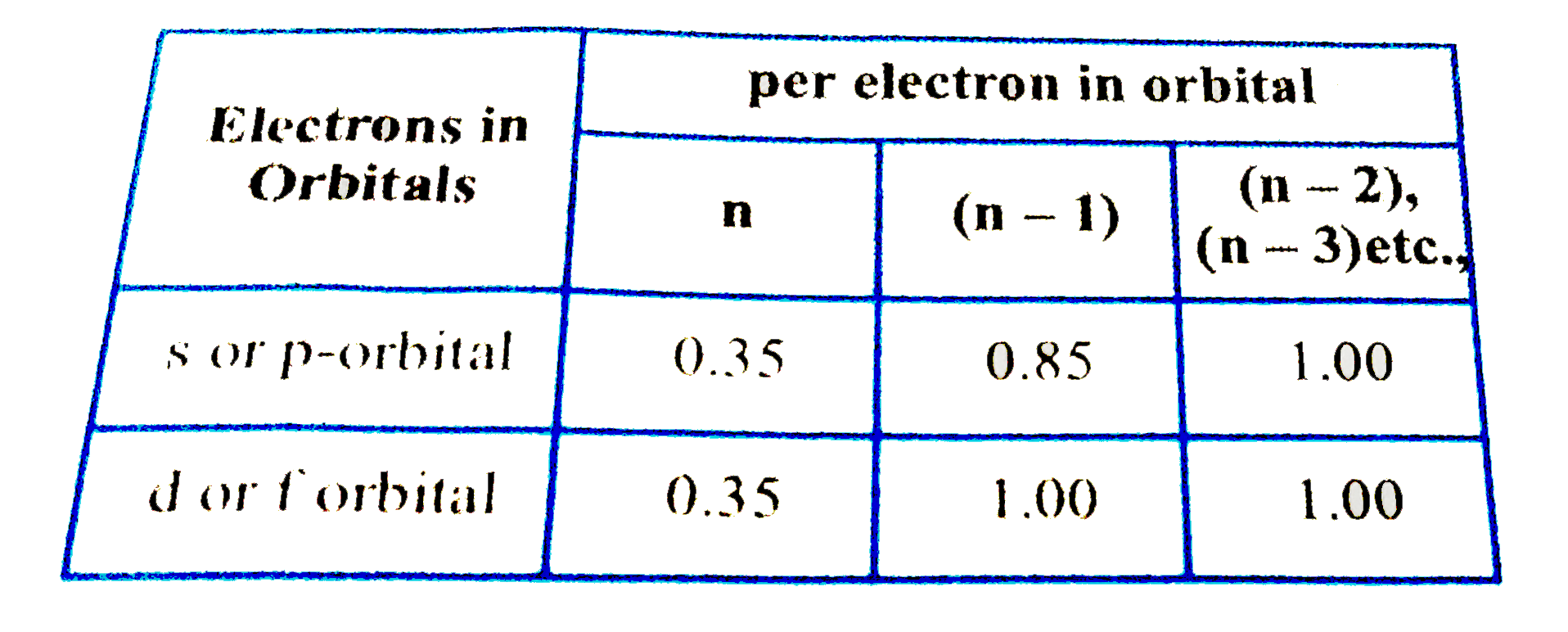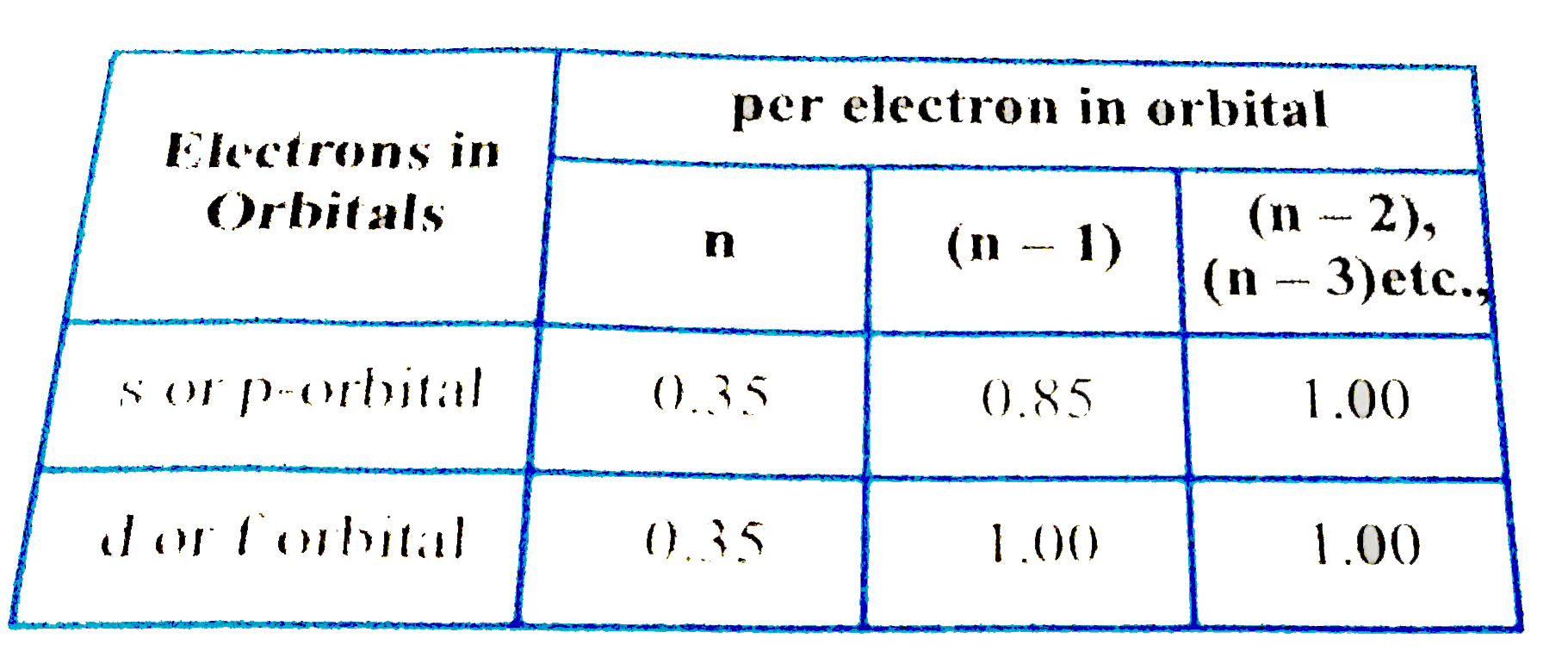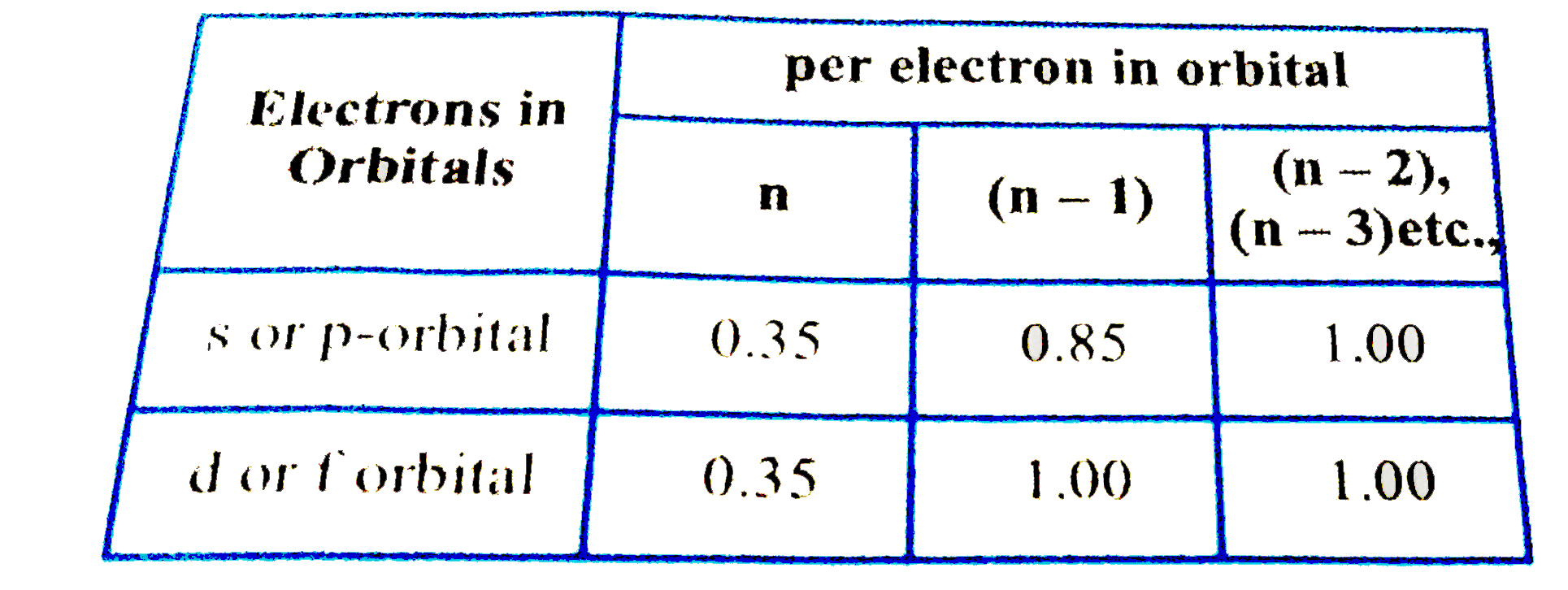Screening Effect
Step by step video solution for Screening Effect by Chemistry experts to help you in doubts & scoring excellent marks in Class 12 exams.
Updated on:21/07/2023Similar Questions
Ionization Enthalpy|Successive Ionization Enthalpy|Factors Affecting Ionization Enthalpy|Nuclear Charge |Atomic Size |Penetration Effect Of The Electrons |Exercise Questions |Shielding Or Screening Effect Of The Inner Shell Electrons |Summary
View SolutionFactors Affecting Atomic Radii - Nuclear Charge|Screening Effect|Factors Affecting Atomic Radii - Nuclear Of Shells|Variation Along Period|Variation Along Group|Group 13 (Exception)|D-Block Contraction|Summary
View Solution
Knowledge Check
According to I.C slater effective nuclear charge, Z∗, due to screening, is not exactly equal to the actual nuclear charge Z of the nucleus of the atom. Z∗ depends on the type of orbitals in which the electron is housed, and on the ability of other electrons in more penetrating orbitals to screen the electron in question from the nucleus.
The relative extent to which the various orbitals penetrate the electron clouds of other orbitals is s>p>f . The effective nuclear charge Z∗ due to screening is given by Z∗=Z−σ, where Z is the atomic atomic number and σ is the slater screening constant values 0<σ<Z

Screening effect of one electron in the outermost orbitals, is not considered in calculate of σ.
In which of the following cases the concept of Z∗ is applicable?AIonisation energy increases as Z∗ increasesBElectronegativity of the atom increases as Z∗ increasesCThe ionisation energy of Na,K−,Rb− , are comparable because of equal Z∗DAll of the aboveAccording to I.C slater effective nuclear charge, Z∗, due to screening, is not exactly equal to the actual nuclear charge Z of the nucleus of the atom. Z∗ depends on the type of orbitals in which the electron is housed, and on the ability of other electrons in more penetrating orbitals to screen the electron in question from the nucleus.
The relative extent to which the various orbitals penetrate the electron clouds of other orbitals is s>p>f . The effective nuclear charge Z∗ due to screening is given by Z∗=Z−σ, where Z is the atomic atomic number and σ is the slater screening constant values 0<σ<Z

Screening effect of one electron in the outermost orbitals, is not considered in calculate of σ.
what is Z∗ for Cu(29) ?A29B24.8C2.2D4.2According to I.C slater effective nuclear charge, Z∗, due to screening, is not exactly equal to the actual nuclear charge Z of the nucleus of the atom. Z∗ depends on the type of orbitals in which the electron is housed, and on the ability of other electrons in more penetrating orbitals to screen the electron in question from the nucleus.
The relative extent to which the various orbitals penetrate the electron clouds of other orbitals is s>p>f . The effective nuclear charge Z∗ due to screening is given by Z∗=Z−σ, where Z is the atomic atomic number and σ is the slater screening constant values 0<σ<Z

Screening effect of one electron in the outermost orbitals, is not considered in calculate of σ.
What is the value of Z∗ for Rb(37) ?A1.7B1.3C2.2D34.8
Ionization Enthalpy|Successive Ionisative Enthalpies|Questions|Factors Affecting Ionisation Enthalpy|Nuclear Charge|Atomic Size|Penetration Effect Of The Electrons|Questions|Shlelding Or Screening Effect Of The Inner Shell Electrons|Electronic Configuration|Variation Of Ionisation Enthalpy In Period|Explanation|Variation Along Group|Summary
View SolutionIonization Enthalpy|Successive Ionisative Enthalpies|Questions|Factors Affecting Ionisation Enthalpy|Nuclear Charge|Atomic Size|Penetration Effect Of The Electrons|Questions|Shlelding Or Screening Effect Of The Inner Shell Electrons|Electronic Configuration|Variation Of Ionisation Enthalpy In Period|Explanation|Variation Along Group|Quiz|Summary
View SolutionAccording to I.C slater effective nuclear charge, Z∗, due to screening, is not exactly equal to the actual nuclear charge Z of the nucleus of the atom. Z∗ depends on the type of orbitals in which the electron is housed, and on the ability of other electrons in more penetrating orbitals to screen the electron in question from the nucleus.
The relative extent to which the various orbitals penetrate the electron clouds of other orbitals is s>p>f . The effective nuclear charge Z∗ due to screening is given by Z∗=Z−σ, where Z is the atomic atomic number and σ is the slater screening constant values 0<σ<Z

Screening effect of one electron in the outermost orbitals, is not considered in calculate of σ.
What is the value of Z∗ for Rb(37) ?
View SolutionThe energy required to pull the most loosely bound electrons from an atom is known as ionization potential. It is expressed in electron volts. The value of ionization potential depends on three factors :(i) the charge on the nucleus (ii) the atomic radius and (iii) the screening effect of inner electron shells.
Which of the following elements has the least ionization potential?
View SolutionThe energy required to pull the most loosely bound electron form an atom is known as ionizatino potential it is expressed in electron volts. The value of ionization potntial depends on three factors: (i) the charge on the nucleus (ii) the atomic radius and (iii) the screening effect of inner electron shells.
Q. Ionization potential of Na would be numerically the same as:
View Solution
